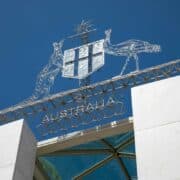Australia releases 10-year blueprint for expansion of its international education sector
Australia took a bold step this week with the release of the country’s first comprehensive national strategy for international education. The National Strategy for International Education 2025 is the product of extensive industry and stakeholder consultations that unfolded throughout 2015 and it follows the earlier release of a draft strategy in April 2015. The strategy is notable both for its comprehensive vision for expanding Australia’s education exports and for its ambition to, in some respects at least, redefine and reshape the country’s international education sector. Presented by Minister for Foreign Affairs Julie Bishop and Minister for Tourism and International Education Richard Colbeck on 30 April 2015, the strategy actually encompasses three integrated strategies for the advancement of Australia’s international education sector.
- The National Strategy for International Education 2025 itself, which reflects a "whole-of-sector" approach and sets out a 10-year plan for further developing Australia’s position as a global leader in education and training. The national strategy is based around three pillars: "strengthening the fundamentals" (including improvements to student services and quality assurance), "making transformative partnerships" (which focuses on links at home and abroad, alumni networks, and visa policy), and "competing globally."
- The Australian International Education 2025 (AIE2025) market development roadmap, which is the product of both extensive consultations within the sector and research from Deloitte Access Economics. It provides a 10-year market development framework for Australia’s education exports, including "game-changing" strategies to build scalable, collaborative networks of education providers, attract capital to fuel the sector’s expansion, and target key markets abroad.
- The Australia Global Alumni Engagement Strategy 2016-2020 outlines a five-year plan to strengthen and engage Australia’s foreign alumni with the broader goals of enhancing the country’s diplomatic access and influence and building trade and investment links.
"This signals the sector’s and the government’s commitment to work together to advance international education by identifying new products and new opportunities for expansion, and building on our current presence in existing markets," said Minister Colbeck. The Minister highlighted as well that international education has been identified as one of five "super growth sectors" that will help complete Australia’s transition from a resource-based economy to a modern services and knowledge economy. "To achieve this," he adds, "we must build on our existing education, training and research strengths, to deliver high quality, innovative products and services to students that meet or exceed their expectations. This will enable us to withstand increasing competition and sustainably grow our market share, whilst maintaining the quality for which we are renowned."
Reconceptualising learning and export goals
There are some notable aspects as to how the AIE2025 market development roadmap frames Australia’s current market position. It puts international enrolment in the country at just under 500,000 students for 2015, which would make Australia the third most-popular study destination after the US and UK. Indeed, the roadmap explicitly identifies the the US and UK as Australia’s primary competitors. Much of the analysis behind AIE2025 comes from Deloitte Access Economics, which projects a global market of more than one billion students actively seeking education and skills by 2025. Of particular note here is that Deloitte is applying a very broad concept of “student” to include internationally mobile learners as well as those who pursue education via transnational education or online learning. As education demand – driven both by population growth and increasing global wealth – continues to grow, Deloitte forecasts that Australia’s international enrolment will increase by about 45% by 2025. This works out to a compound annual growth rate of 3.8% over the next ten years and anticipates that about 720,000 foreign students will be enrolled in Australian institutions and schools by 2025. In a high market-share scenario modelled by Deloitte, this projected enrolment could conceivably even reach 990,000 over the next ten years. "Onshore students in Australia will always remain core,” says the Deloitte report. But the firm clearly sets out a broader frame for Australia’s education exports as well, one that breaks down conventional distinctions between different modes of delivery. "The traditional demarcation of the sector into onshore and offshore or transnational reflects a division that will be challenged as 2025 students access the skills and knowledge they require at the time they chose, through the channel that optimises their learning experience, be it in Australia, online, or in-market as part of course delivery or on-the-job learning." With this broader concept in mind, the AIE2025 roadmap aspires to a 10% share of the education export market for Australia, or the equivalent of about 110 million learners across all modes of delivery by 2025. "This scale of ambition reflects the role of international education as one of the next major opportunities to help drive our growth and prosperity," says the report. The most striking thing about this model is not just that it clearly anticipates a very large volume of students enrolled with Australian providers over the next decade. Rather, it is its emphasis on the large share of this student population that will be served by transnational education and/or technology-enabled delivery. "In-market delivery will broaden the number of students who can access Australian education products," says Deloitte. "This may occur through partnership arrangements with local providers, onshore presence of Australian education providers or through distance learning. Given the scale of the potential demand, Australian training providers may increase capacity through partnership or consortia arrangements with one another when entering these markets. The success of this strategy is dependent on stakeholders working together to grow our international education offerings."
Focus on markets and employability
The AIE2025 roadmap is very clear that implementation will focus on specific target markets, but these targets are not explored in any great detail in the strategy documents, suggesting that this key aspect will be fleshed out further in the forthcoming implementation plan. However, the national strategy allows that much of the projected growth over the next decade will continue to come from China and India, and that other important markets will include the Philippines, Thailand, Indonesia, Vietnam, South Korea, Malaysia, and Hong Kong. Reflecting the growing body of research as to the importance of employment outcomes for international students, the national strategy also clearly sets out the linkage between expanding education exports and employability of foreign graduates. This is one area where the comprehensive nature of the strategy starts to really click. It anticipates, for example, not only the importance of delivering education and training that provides students with skills required by the labour market, but also that educators will need to expand opportunities to integrate work and learning and, further still, that Australian immigration policy will need to support competitive work rights offers for foreign students. The consultations around the strategy were enabled and supported by a committee of peak body executives, the Coordinating Council for International Education. The Coordinating Council will now give way to a more permanent council, again representing "a broad cross-section of Australian education stakeholders, that will be charged with the implementation of the new strategy". Reflecting this strong industry connection to the process, major industry groups in Australia have been quick to voice their support for the national strategy. "For too long, international education has fallen between the cracks of different Ministers and Departments,” said Universities Australia Chief Executive Belinda Robinson. "The fact that both government and industry representatives were willing to take a whole-of-sector approach in framing the strategy is to be commended." "Given that international education is now worth AUS$19.6 billion (US$14.7 billion) a year to the Australian economy, it now requires the level of attention that the nation's third largest export sector should attract," added Phil Honeywood, CEO of the International Education Association of Australia.
Most Recent
-
Australia passes integrity legislation; sharpens definition of agents and agent commissions Read More
-
Canada announces international student cap numbers for 2026 and updated programme guidance Read More
-
Building the bridge to campus: The first stage of student satisfaction begins long before admission Read More
















